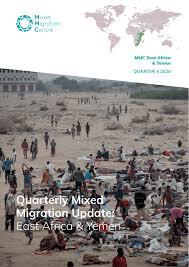Desert Locust Bulletin 505 (2 November 2020)


Epicentre shifting to eastern Ethiopia and Somalia
As anticipated, numerous swarms formed in northeast Ethiopia during October. The situation improved by the end of the month due to intensive control operations, and as swarms moved north into the highlands and to Eritrea, south into the Rift Valley, and further east. Consequently, the epicentre will shift to the Somali region in eastern Ethiopia and adjacent areas of Somalia where control operations are in progress. Another generation of breeding started in this vast area where mature swarms in northeast Somalia moved southwards and laid eggs that are hatching and hopper bands are forming. More bands will form during November and a new generation of immature swarms will form in early December that are expected to move south and threaten southeast Ethiopia, southern Somalia, and northeast Kenya. The swarms that moved to Eritrea are likely to reach the Red Sea coast where control operations are in progress against hopper bands. Control continued against hopper bands in eastern Sudan and on the Red Sea coast in Yemen and southwest Saudi Arabia. Breeding ended in the Yemen interior and swarms moved ot the coast. Winter breeding along both sides of the Red Sea could cause hopper bands and swarms to form, especially in Yemen. The situation will continue to remain calm in other regions and no significant developments are expected.

Aden — Yemen Airways has announced new updates to its ticket cancellation (VOID) policy, introducing financial penalties on travel agents in…

Geneva – The United States announced that Yemen will not be among the countries benefiting from a new $2 billion funding pledge for United Na…

Paris — The French humanitarian organization Acted announced that it has delivered cash assistance to nearly 89,000 people affected by displa…